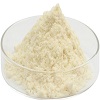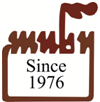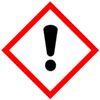Boswellia Dry Extract Manufacturers, with SDS GHS MSDS Sheet |
Supplier, Manufacturer, Exporter of Boswellia Dry Extract, Muby Chemicals of Mubychem Group, established in 1976, is the original manufacturers of Specialty Chemicals, Pharmaceutical Excipient, Fragrance Food & Flavor chemicals, Reagent Grade Chemicals, Shale Gas Fracturing Chemicals in India. Mubychem Group has several manufacturing facilities spread across Western India and world wide contacts and toll manufacturers. We are exporting globally to countries like USA, Canada, Europe, UAE, South Africa, Tanzania, Kenya, Egypt, Nigeria, Cameroon, Uganda, Turkey, Mexico, Brazil, Chile, Argentina, Dubai, Korea, Vietnam, Thailand, Malaysia, Indonesia, Australia, China, Germany, France, Italy Portugal, Bangladesh, etc. The products are offered as per required specifications and in correct shape and size in mm or meshs or microns as specified by the buyer. The participating units have one or more accreditations like FDA - cGMP and GLP approval, ISO-9001 Certified, "REACH" Registered, ISO-14001, ISO/IEC 17025, ISO-22000, FSSC 22000, ISO 45001, Kosher Certified, Halal Certified, HACCP, FSSAI. We offer Commercial Pure & IP BP EP Ph Eur USP NF JP FCC Food Grade Analytical Reagent Grades of Chemicals |
| Bookmark this Web Site -- or -- Email This Page Info to a Colleague or Yourself |
Search our website here:







Boswellia Dry Extract CAS Number 97952-72-2, EINECS EC Number: 308-366-6, HS Code 13021919 or 13021990
How big is your requirement or how small
We serve it all.
Specifications, Safety Data Sheet, Manufacturing process details, Wholesale retail buy sell prices, Uses etc available on line in these pages for Boswellia Dry Extract.
For SDS MSDS Sheet Click
SDS MSDS Sheet of Boswellia Dry Extract Manufacturers
Boswellia Dry Extract
Pure Suppliers

Boswellia Dry Extract is an Indian frankincense, is an resin obtained from the Boswellia serrata tree. It is manufactured by the hydroalcoholic extraction of Boswellia Serreta gum having active contents as boswellic acid and it appears as Cream to off white color dry powder. Boswellia serrata contains chemicals that might decrease swelling and increase the body's immune response.
General Specifications Boswellia Dry Extract 50%:
Appearance: Off White to Creamish Colour Powder with Characteristic Odor & Taste.
Identification: Thin Layer Chromatography.
Solubility In alcohol: Not less than 95.0%
pH (1% solution): 4 to 7
Loss on Drying: Not more than 5.0%
Assay of Boswellic Acid (By Titration): About 50%
General Specifications Boswellia Dry Extract 65%:
Appearance: Off White to Creamish Colour Powder with Characteristic Odor & Taste.
Identification: HPLC.
Solubility In alcohol: Not less than 95.0%
pH (1% solution): 4 to 7
Loss on Drying: Not more than 5.0%
Assay of Boswellic Acid (By Titration): About 65%
For Original Monographs of IP Indian Pharmacopoeia EP Ph Eur European Pharmacopoeia BP British Pharmacopoeia USP US Pharmacopoeia FCC Food Grade product, please check with the respective web-pages or books.
We also manufacture and supply as under:
Ginseng Dry Extract or Korean Ginseng Extract
Fe46 Liquid Iron Control Blend
Manjistha Extract or Rubia Cordifolia or Indian Madder Extract or Powder
Manufacturers:
MUBY CHEMICALS
Ambernath Mumbai, Ankleshwar Gujarat, India
TEL: (OFFICE) +912223770100, +912223726950
Current Date Time in India GMT+5:30
e-mail: info@mubychem.com
USA, Canada, Mexico and other American neighbouring buyers may
e-mail: us@mubychem.com
Call toll-free 1-877-682-9243 (1-877-MUBYCHEM)

Copyright and Usual Disclaimer is Applicable.
Last 15 November, 2025




Exporters to USA Canada UAE Europe South Africa Tanzania Kenya Uganda Egypt Nigeria Turkey Mexico Brazil Argentina Chile Dubai etc.
Global or International Suppliers, Exporters, Importers, Manufacturers
I shall pass through this world, but once. If therefore, there is any good that I can do, or if there is any favor that I can show to a fellow human being, let me do it now. Let me not defer or neglect it. For I shall not tread this way again
Boswellia Dry Extract SDS or Safety Data Sheet
Material Safety Data Sheet 20-Jul-24
1. Product Identification
Product Name & Other Names: Boswellia Dry Extract.
CAS No.: 97952-72-2
EINECS EC Number: 308-366-6
Relevant uses and uses advised against (if any): Industrial use only.
Supplier: As per letterhead.
2. Hazards Identification
GHS, Globally Harmonized System Classification in accordance with 29 CFR 1910
Classification according to Regulation (EC) No 1272/2008
Skin corrosion/irritation Category 2 - H315
Serious eye damage/eye irritation Category 2A - H319
Specific target organ toxicity, single exposure; Respiratory tract irritation Category 3 - H335
Labeling according to GHS & Regulation (EC) No 1272/2008
GHS Label Elements  Irritant |
Signal Word: Danger
Hazard statements
H315: Causes skin irritation.
>H319: Causes serious eye irritation.
H335: May cause respiratory irritation.
Precautionary statements Prevention
P261: Avoid breathing dust/fumes.
P285: In case of inadequate ventilation wear respiratory protection.
P280: Wear protective gloves/protective clothing/eye protection/face protection.
Precautionary statements Response
P304+341: IF INHALED: If breathing is difficult, remove victim to fresh air and keep at rest in a position comfortable for breathing.
P342+P311: If experiencing respiratory symptoms: Call a POISON CENTER/doctor/physician/first aider.
P305+P351+P338: IF IN EYES: Rinse cautiously with water for several minutes. Remove contact lenses, if present and easy to do. Continue rinsing.
P337+P313: If eye irritation persists: Get medical advice/attention.>
P302+P352: IF ON SKIN: Wash with plenty of water and soap.
P332+P313: If skin irritation occurs: Get medical advice/attention.
Precautionary statement(s) Storage
P403+P233: Store in a well-ventilated place. Keep container tightly closed.
Precautionary statements Disposal
P501: Dispose of contents/container in accordance with local regulations.
Classification according to EU Directives 67/548/EEC or 1999/45/EC:
Hazard Symbols:
Xi = Irritant.
Risk Phrases:
R36/37/38 Irritating to eyes, respiratory system, and skin.
3. Composition/Information on Ingredients
Product Name & Other Names: Boswellia Dry Extract.
CAS No.: 97952-72-2
EINECS EC Number: 308-366-6
4. First Aid Measures
Always seek medical attention after first aid measures are provided.
Eye Contact: Wash out immediately with fresh running water. Ensure complete irrigation of the eye by keeping eyelids apart and away from eye and moving the eyelids by occasionally lifting the upper and lower lids. Seek medical attention without delay; if pain persists or recurs seek medical attention.
Skin Contact: Immediately remove all contaminated clothing, including footwear. Flush skin and hair with running water (and soap if available). Seek medical attention in event of irritation.
Inhalation: Lay patient down. Keep warm and rested. Prostheses such as false teeth, which may block airway, should be removed, where possible, prior to initiating first aid procedures. Apply artificial respiration if not breathing, preferably with a demand valve resuscitator, bag-valve mask device, or pocket mask as trained.
Ingestion: If swallowed do NOT induce vomiting. If vomiting occurs, lean patient forward or place on left side (head-down position, if possible) to maintain open airway and prevent aspiration. Observe the patient carefully. Never give liquid to a person showing signs of being sleepy or with reduced awareness i.e. becoming unconscious. Give water to rinse out mouth, then provide liquid slowly and as much as casualty can comfortably drink. Seek medical advice.
Indication of any medical attention and special treatment needed: Treat symptomatically.
5. Fire Fighting Measures
Extinguishing media: Water spray or fog, Foam, Dry chemical powder, BCF (where regulations permit), Carbon dioxide.
Special hazards arising from the substrate or mixture: Avoid contamination with oxidizing agents i.e. nitrates, oxidizing acids, chlorine bleaches, pool chlorine etc. as ignition may result.
Fire Fighting: Alert Fire Brigade and tell them location and nature of hazard. Wear breathing apparatus plus protective gloves. Prevent, by any means available, spillage from entering drains or water courses. Use water delivered as a fine spray to control fire and cool adjacent area. Cool fire exposed containers with water spray from a protected location. If safe to do so, remove containers from path of fire. Equipment should be thoroughly decontaminated after use.
Fire/Explosion Hazard: Combustible solid which burns but propagates flame with difficulty; it is estimated that most organic dusts are combustible - according to the circumstances under which the combustion process occurs, such materials may cause fires and / or dust explosions. Organic powders when finely divided over a range of concentrations regardless of particulate size or shape and suspended in air or some other oxidizing medium may form explosive dust-air mixtures and result in a fire or dust explosion (including secondary explosions). Avoid generating dust, particularly clouds of dust in a confined or unventilated space as dusts may form an explosive mixture with air, and any source of ignition, i.e. flame or spark, will cause fire or explosion.
Combustion products include: carbon monoxide (CO), carbon dioxide (CO2). May emit poisonous and corrosive fumes.
6. Accidental Release Measures
Personal precautions, protective equipment, and emergency procedures: Avoid breathing dust/fumes/gas/mist/vapors/spray. Ensure adequate ventilation. Use individual protective equipment (waterproof boots, suitable protective clothing, safety glasses, etc.). Restrict unprotected personnel from the area. Prevent any contact with hot surfaces. Do not approach facing the wind. Do not touch the spilled material.
Environmental precautions: Do not let the product enter drains, soil, or water sources.
Methods and materials used for containment cleanup procedures and Storage:
Minor Spills: Remove all ignition sources. Clean up all spills immediately. Avoid contact with skin and eyes. Control personal contact with the substance, by using protective equipment. Use dry clean up procedures and avoid generating dust. Place in a suitable, labeled container for waste disposal.
7. Handling and Storage
Precautions for safe handling:
Avoid all personal contact, including inhalation.
Wear protective clothing when risk of exposure occurs.
Use in a well-ventilated area.
Prevent concentration in hollows and sumps.
DO NOT enter confined spaces until atmosphere has been checked.
DO NOT allow material to contact humans, exposed food or food utensils.
Avoid contact with incompatible materials.
When handling, DO NOT eat, drink or smoke.
Keep containers securely sealed when not in use.
Avoid physical damage to containers.
Always wash hands with soap and water after handling.>
Use good occupational work practice.
Minimize airborne dust and eliminate all ignition sources. Keep away from heat, hot surfaces, sparks, and flame.
Other information: Store in original containers. Keep containers securely sealed. Store in a cool, dry area protected from environmental extremes. Store away from incompatible materials and foodstuff containers. Protect containers against physical damage and check regularly for leaks.
8. Exposure Controls/Personal Protection
Occupational Exposure Limits (Oel): Not Available
Appropriate engineering controls: Engineering controls are used to remove a hazard or place a barrier between the worker and the hazard. Well-designed engineering controls can be highly effective in protecting workers and will typically be independent of worker interactions to provide this high level of protection.
The basic types of engineering controls are:
Enclosure and/or isolation of emission source which keeps a selected hazard "physically" away from the worker and ventilation that strategically "adds" and "removes" air in the work environment. Ventilation can remove or dilute an air contaminant if designed properly. Local exhaust ventilation is required where solids are handled as powders or crystals; even when particulates are relatively large, a certain proportion will be powdered by mutual friction. Exhaust ventilation should be designed to prevent accumulation and recirculation of particulates in the workplace.
If despite local exhaust an adverse concentration of the substance in air could occur, respiratory protection should be considered. Such protection might consist of:
(a): particle dust respirators, if necessary, combined with an absorption cartridge;
(b): filter respirators with absorption cartridge or canister of the right type;
(c): fresh-air hoods or masks
Build-up of electrostatic charge on the dust particle, may be prevented by bonding and grounding.
Personal protection
Eye and face protection:
Safety glasses with side shields.
Chemical goggles.
Contact lenses may pose a special hazard; soft contact lenses may absorb and concentrate irritants. A written policy document, describing the wearing of lenses or restrictions on use, should be created for each workplace or task. This should include a review of lens absorption and adsorption for the class of chemicals in use and an account of injury experience. Medical and first-aid personnel should be trained in their removal and suitable equipment should be readily available. In the event of chemical exposure, begin eye irrigation immediately and remove contact lens as soon as practicable. Lens should be removed at the first signs of eye redness or irritation - lens should be removed in a clean environment only after workers have washed hands.
Hands/feet protection:
The exact break through time for substances has to be obtained from the manufacturer of the protective gloves and has to be observed when making a final choice.
Personal hygiene is a key element of effective hand care. Gloves must only be worn on clean hands. After using gloves, hands should be washed and dried thoroughly. Application of a non-perfumed moisturizer is recommended.
Select gloves tested to a relevant standard. For general applications, gloves with a thickness typically greater than 0.35 mm, are recommended.
Other protection: P.V.C. apron. Barrier cream. Skin cleansing cream. Eye wash unit.
Respiratory protection:
Respirators may be necessary when engineering and administrative controls do not adequately prevent exposures. Use approved positive flow mask if significant quantities of dust become airborne.
9. Physical and Chemical Properties
Appearance: Off White to Creamish Colour Powder with Characteristic Odor & Taste.
Odor: Characteristic.
Odor threshold: Not available.
pH (1% solution): 4 to 7
Relative density: Not available.
Melting point / freezing point (°C): Not available.
Initial boiling point and boiling range: Not available.
Flash point: Not available.
Auto-ignition temperature: Not available.
Decomposition temperature: Not available.
Upper/lower flammability or explosive limits: Not available.
Vapor pressure: Not available.
Vapor density: Not available.
Evaporation rate: Not available.
Flammability (solid, gas): Not available.
Partition coefficient: n-octanol/water: Not available.
Solubility in water (g/L): Not available.
Viscosity (cSt): Not available.
10. Stability and Reactivity
Chemical stability:
Product is considered stable.
Unstable in the presence of incompatible materials.
Hazardous polymerization will not occur.
Conditions to avoid- Heat, Strong oxidizing agents.
Hazardous decomposition products: Carbon oxides and fumes.
11. Toxicological Information
Toxicity to Animals: Not Available
Mutagenicity: Data Not Available to make classification
Carcinogenicity: Data Not Available to make classification
Teratogenic Effects: Not available.
Mutagenic Effects: Not available.
Developmental Toxicity: Not available.
Reproductive Effects: No information available.
12. Ecological Information
Toxicity: No information available.
Persistence: Bio-degradable
Bioaccumulation: No Data available for all ingredients
Mobility in soil: No Data available for all ingredients.
13. Disposal Considerations
Containers may still present a chemical hazard/ danger when empty. Return to supplier for reuse/ recycling if possible. If containers cannot be cleaned sufficiently well to ensure that residuals do not remain or if the container cannot be used to store the same product, then puncture containers, to prevent re-use, and bury them at an authorized landfill.
14. Transport Information
Marine Pollutant: No
DOT USA ADR/RID Europe: Not Regulated.
IMDG: Not Regulated.
IATA: Not Regulated.
15. Regulatory Information
No further information was found.
16. Other Information
European Labeling in Accordance with EC Directives:
H315-Causes skin irritation.
H319 -Causes serious eye irritation.
H335-May cause respiratory irritation.
Classification according to EU Directives 67/548/EEC or 1999/45/EC:
Hazard Symbols:
Xi = Irritant.
Risk Phrases:
R36/37/38 Irritating to eyes, respiratory system, and skin.
Disclaimer:
**************************
Our company provides this MSDS sheet in good faith but makes no representation as to its comprehensiveness or accuracy. This SDS sheet is intended only as a guide to the appropriate precautionary handling of the material by a properly trained person using this product. The above information has been compiled from various sources and has the possibility of discrepancy and being out-dated information. Individuals receiving the information must exercise their independent judgment and do further search in determining its appropriateness for a particular purpose. In no case shall our company be liable to loss or damages by the product user.
**************************
















